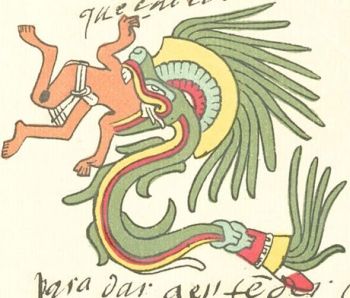History Mysteries....
I want to be a little spy around Loch Ness.In fact there are a lots of animals to look out in Scotland.I find red squirrel .It's a very shy creatures.They're so small.If you look very carefully you will undrstand that there are so many anmails .And They're waiting for you to discover them.From Aberdeen to Inverness the price of train is about 28 pounds.I suggest everyone must wake up earier in the moring.Because you need to take a boat .

Jacobite is one of boat companies you can sail ......

The Yacumama real are real. They may even be a previously undiscovered species.
 Early depiction of a Yacumama. |
(CHICAGO) - The world is filled with secrets. Many of them it does not give up easily. Empires have risen and empires have fallen in the midst of mysteries-riddles that remained unsolved through the centuries.
One such mystery has haunted the darker, steamier regions of the fabled land of the Amazon. The Amazon, that dark, forbidding river sluggishly twisting its way through Brazil and eight other South American countries. It is a river second in size only to the mighty Nile and it's so wide that no bridge passes over it.
As far back as the Aztecs, legends have been spoken about the monster snakes. The Aztecs of central Mexico made it one of their most powerful gods: Quetzalcoatl.
In the centuries that followed the indigenous peoples of the Amazon often spoke of the Yacumama—the snake of the water. European and American herpetologists shrugged off the talk as myths or as references to the great aquatic boa, the anaconda.
According to the indigenous peoples other giant snakes inhabit the Amazon's shadowy realm too: the Sachamama and the Minhocão, a snake that some Amazon natives believe can alter the land as they pass through.
Despite the herpetologists' belief, the natives were not speaking of big anaconda by different names. They spoke of true monsters-leviathans so huge that the anaconda would be small in comparison. The snakes the natives sometimes spoke of in fear and awe-over village campfires and the safety of their homes—measured 120, sometimes 160 feet long. The heads of these mammoth creatures were said to reach 6 feet wide. They could shoot down prey with explosive jets of water, topple trees in their passage and change the course of minor tributaries.
During the year 1906 the world-famous explorer Major Percy H. Fawcett claimed of encountering a gigantic anaconda while traveling up the Amazon River. He shot the creature and observed it as it lay dying.
He recalled: "We stepped ashore and approached the reptile with caution. It was out of action, but shivers ran up and down the body like puffs of wind on a mountain tarn. As far as it was possible to measure, a length of 45 feet lay out of the water, and 17 feet in it, making a total length of 62 feet ... such large specimens as this may not be common, but the trails in the swamps reach a width of six feet and support the statements of Indians and rubber pickers that the anaconda sometimes reaches an incredible size, altogether dwarfing the one shot by me. The Brazilian Boundary Commission told me of one killed in the Rio Paraguay exceeding 80 feet in length!"
Yet the professional academicians and peer-reviewed herpetologists were far from convinced. Monstrous snakes just seemed so patently outlandish.
So the controversy festered for another century until two brothers, Mike and Greg Warner, mounted a an expedition into the Amazon jungles hunting for evidence of the monster snakes. The expedition was inconclusive, although they recorded mammoth snake trails and took testimonies from natives who claimed to have seen the Yacumama.
Mike Warner talked to hundreds of natives and workers who had encounters with the Yacumama. He researched thousands more. He notes that both native tribes of certain African regions and natives near the Amazon River in South America describe a huge snake that "carries its water with it.”
Although the first expedition failed to find the elusive Yacumama, the brothers were undeterred. After raising new funds two they mounted another expedition to the Amazon.
It seems that they found it. In fact, their findings are so credible that the National Geographic Society expressed serious interest in the brothers' research and findings.
What they found tallied with previous eyewitness reports.
Over the years, many sightings of Yacumama have included descriptions of the snake as sprouting horns on its head. This peculiar feature, mentioned in so many reports coming from independent observers up and down the Amazon, has led Warner to his hypothesis that the Yacumama could be a prehistoric version of the modern day caecilian. Most of the 50 or so species of caecilian that are cataloged do have a groove running along either side of the head that contains retractable tentacles. To untrained observers, they may appear as horns.
According to Mike Warner, "The exact species of this creature is unknown but we believe that the physical characteristics and behavior are that of a snake [or amphibian] with behavior similar to a caecilian." [An amphibian creature similar to a snake.]
Most of the witnesses who have sighted a Yacumama did not spend too much time studying the creature-they usually happened upon it by chance and then turned tail and ran for their lives.
Warner's research led him to discover that the Yacumama seeks its prey near regions where two rivers merge into one, called a "confluence." He determined that those areas provide the mammoth predators a constant supply of food.
He hypothesizes that such a capability may have one or more of the following purposes:
上一篇:星星之火可以燎原
下一篇:A new bride